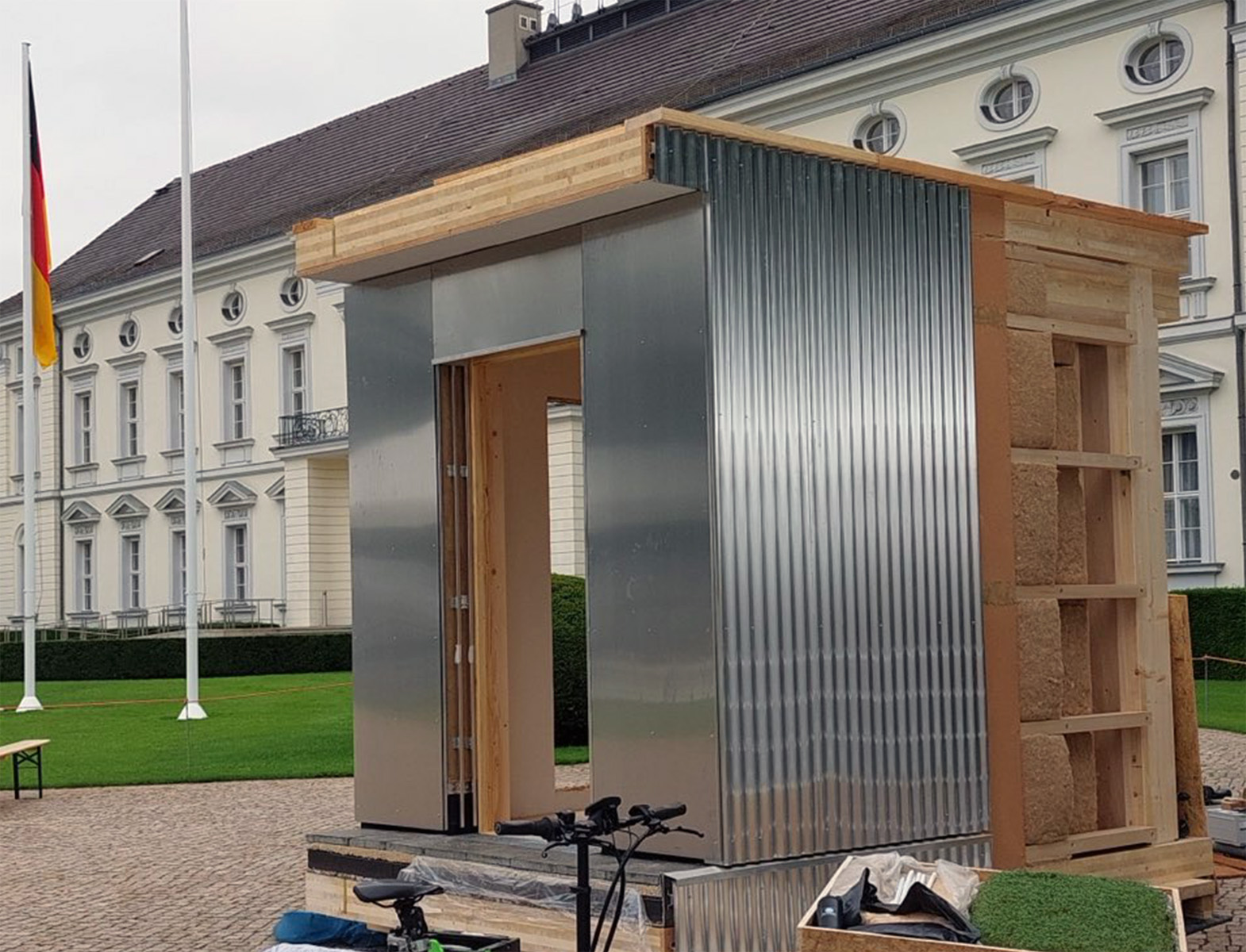3 June 2024
Climate Change Centre presents wood as a sustainable building material of the future at the Week of the Environment
The demonstrator for the timber skyscraper is almost four metres high and weighs seven tonnes. It can be seen for two days on 4 and 5 June at an innovation show at the ‘Woche der Umwelt’ (Environment Week) in the garden of Bellevue Palace. The ‘Woodscraper’ is due to be realised shortly. It is an example of what is possible in sustainable building with wood and other natural materials.
A new study by the Climate Change Centre Berlin Brandenburg provides extensive information on sustainable forestry and the diverse use of wood as a building material as well as other natural materials (hemp, clay, straw, mushrooms, etc.) and lists important contacts for sustainable construction in Berlin and Brandenburg. The publication was produced by the Natural Building Lab at Technische Universität Berlin (Prof. Dr Eike Roswag-Klinge, Kim Gundlach) in collaboration with Bauhaus Erde GmbH (Prof. Dr Philipp Misselwitz) and is the final report of one of 17 climate protection research projects funded by the CCC in 2023 with funds from the Senate Department for Science, Health and Care.
According to the authors, the construction sector is responsible for around 40 per cent of CO2 emissions, 55 per cent of waste production and 92 per cent of the extraction of mineral resources, making it one of the most climate-damaging sectors in Germany. In order to achieve climate targets and respond appropriately to resource scarcity, land sealing and biodiversity loss, a new construction and refurbishment culture should be established. Concrete, cement, steel and insulation materials could also be replaced to a large extent with wood and other natural fibres such as hemp, clay, straw or even mushrooms. ‘The goal is a circular construction industry,’ explains TU Professor Dr Eike Roswag-Klinge. ‘A lot of carbon dioxide could also be bound by using renewable raw materials in buildings.’
The public sector is a major property developer and can set a good example in climate-neutral construction, e.g. Berliner Immobilien-management GmbH (BIM) or the Berlin housing associations. But the city of Potsdam can also become a ‘timber building city’, because Brandenburg in particular, with its large areas of forest, is predestined for the timber building revolution. For this reason, all stakeholders in the timber value chain in the region – from forestry companies to master carpenters – were addressed in this project and networked with each other through workshops and meetings. This was done in cooperation with the regional professional associations.
For the prototypical and experimental use of timber as a building material, the scientists involved use ‘real laboratories’ where they can try out and demonstrate their ideas. Examples can be found in the ‘Timber Construction Atlas Berlin Brandenburg’.
Damaged wood can also be used in timber construction. It is important that a healthy mixed forest is replanted and that, despite the acceleration of processes, the common good orientation and democratic processes are observed in urban and building planning. ‘Climate-neutral construction also includes the consistent use of recycled materials,’ explains TU Professor Dr Philipp Misselwitz. Before constructing a new building, it should always be checked whether an existing building could be better utilised or converted – in order to limit the large amount of space and resources consumed.


